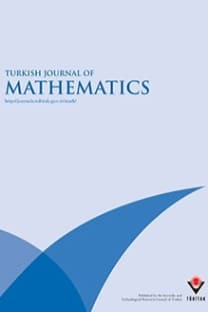Morphism classes producing (weak) Grothendieck topologies, (weak) Lawvere–Tierney topologies, and universal closure operations
Morphism classes producing (weak) Grothendieck topologies, (weak) Lawvere–Tierney topologies, and universal closure operations
___
- [1] Adamek, J., Herrlich, H., Strecker, G.E.: Abstract and Concrete Categories. New York, John Wiley and Sons (1990).
- [2] Dikranjan, D., Tholen, W.: Categorical Structure of Closure Operators. Dordrecht, Kluwer (1995).
- [3] Hosseini, S.N., Mousavi, S.S.: A relation between closure operators on a small category and its category of presheaves. Appl. Categor. Struct. 14, 99ğ110 (2006).
- [4] Johnstone, P.T.: Topos Theory. London, Academic Press (1977).
- [5] MacLane, S., Moerdijk, I.: Sheaves in Geometry and Logic. A First Introduction to Topos Theory. Berlin, Springer (1992).
- ISSN: 1300-0098
- Yayın Aralığı: 6
- Yayıncı: TÜBİTAK
Remarks on the paper ”On some new inequalities for convex functions” by M. Tunç
Algorithm to solve certain ternary quartic Diophantine equations
Radical operations on the multiplicative lattice
Surgery in codimension 3 and the Browder--Livesay invariants
Friedrich HEGENBARTH, Yuri V. MURANOV, Dusan REPOVS
On the Minkowski measurability of self-similar fractals in Rd
Ali DENIZ, Mehmet Sahin KOCAK, Yunus OZDEMIR, Andrei RATIU, Adem Ersin UREYEN
Remarks on the paper ``On some new inequalities for convex functions\\" by M. Tunç
Finite groups with some weakly s-supplementally embedded subgroups
Slant submersions from almost product Riemannian manifolds
A characterization of Auslander category
